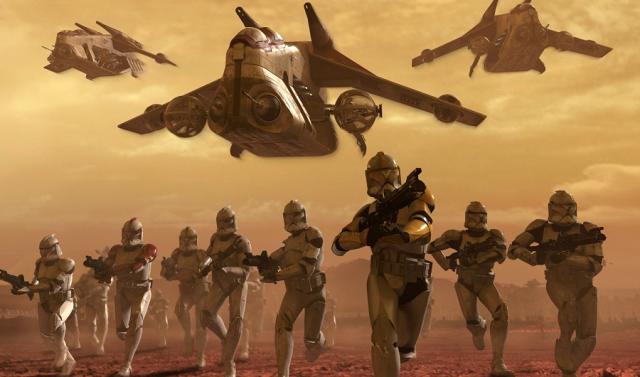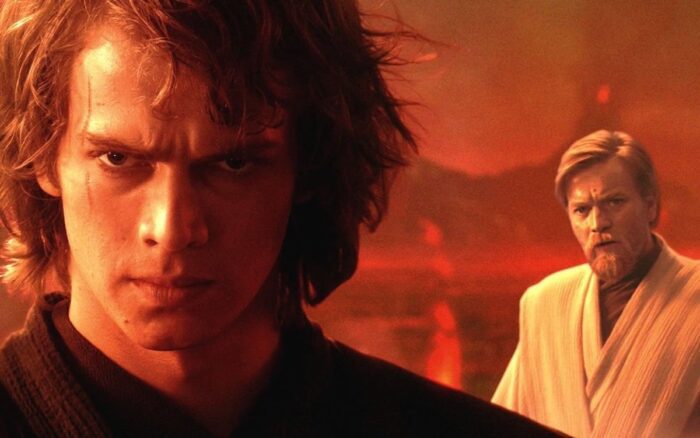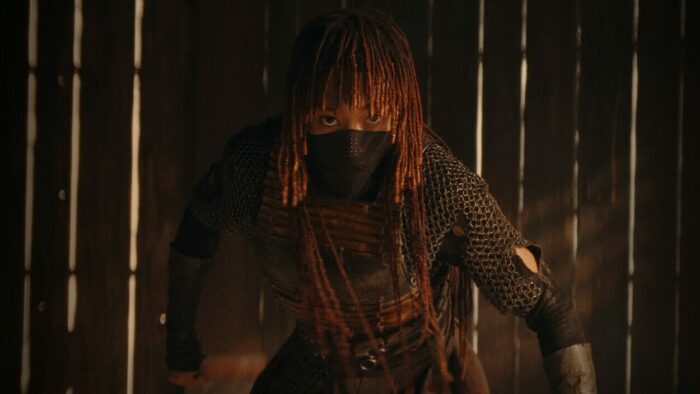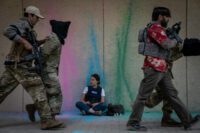When the Star Wars prequels began in 1999 with the release of The Phantom Menace, excitement and anticipation among fans was noticeably high, as was the film’s cultural impact. Star Wars was seen everywhere, from toy stores to grocery stores and even fast food chains (see Taco Bell and KFC’s Phantom Menace-themed kids meal toys). One could argue that the film was never going to match the expectations fans had, and that could have played a part in the reception that followed.

After the plaudits that George Lucas received for his first groundbreaking Star Wars trilogy, the reaction from fans and critics for the prequels were largely the opposite. The first of these prequels was Star Wars: Episode I – The Phantom Menace, which hit theaters on May 19, 1999. The highly anticipated return to a galaxy far, far away starred Liam Neeson and Ewan McGregor in a story that depicted the discovery of young Anakin Skywalker, who would eventually turn into Darth Vader, on the desert planet Tatooine. Episode I opened to huge box office numbers and a record breaking number of audiences turning up to their local movie theater, but many were left disappointed with the final product. There are some interesting broad ideas and themes in The Phantom Menace, such as the concept of the Jedi as a well-intentioned yet arrogant group who brought upon their own downfall as a result of their hubris. However, some would say that those elements are unfortunately not explored enough in the first chapter of the prequels. Despite praise for some excellent visuals, interesting new planets and facets of the Star Wars galaxy (the politics of the Jedi and the politics of the Senate, for example), the lack of narrative depth was a critique of some. As many noted in their initial reactions and reviews, the potential was there for all to see, but unfortunately went unactualized.
Next up for George Lucas was Star Wars: Episode II – Attack of the Clones, which released in theaters on May 16, 2002. The sequel to The Phantom Menace saw Ewan McGregor return as Obi-Wan Kenobi and now featured Hayden Christensen as the prophesized Chosen One Anakin Skywalker. The film followed the two Jedi as they investigate a plot to assassinate Senator Padmé Amidala, played once again by Natalie Portman. Reviewing Attack of the Clones, the second film in the trilogy, Roger Ebert wrote, “But as someone who admired the freshness and energy of the earlier films, I was amazed, at the end of ‘Episode II,’ to realize that I had not heard one line of quotable, memorable dialogue. And the images, however magnificently conceived, did not have the impact they deserved.” Ebert was critical of the dialogue (Episode II has some of the more unintentionally funny lines of the franchise, such as the infamous “I don’t like sand”), and was also highlighting what became a continuous critique of the prequels: the special-effects heavy visuals. Lucas attempted to push forward the new, digital filmmaking technology throughout the prequels, to the delight of some and the disdain of others. Star Ewan McGregor, who played a young Obi-Wan Kenobi, noted in 2022 that he enjoyed filming his comeback to a galaxy far, far away much more than he did the prequels because he was on a set that frequently opted against using green or blue screens.

Ebert’s critiques may seem harsh to some, but, for others, represents their frustration with the prequels at the time. The Battle of Geonosis was intended as the major set piece of Attack of the Clones, and is commendable for its ambition, but it doesn’t quite evoke the same sort of emotion or feeling of excitement that the original three films’ epic final battles did. Hundreds of Jedi fighting alongside each other is exactly what so many fans wanted to see for years, but when it finally arrived, it fell relatively flat for some. The only Jedi that are explored at a somewhat personal level are Anakin Skywalker and Obi-Wan Kenobi, and even they receive lackluster character arcs at times, according to select fans and critics. Anakin does have some gripping moments, such as the slaughter of the Tusken Raiders after they killed his mother, but the character’s growing darkness could have been emphasized with more nuance and subtlety. Hayden Christensen, in his first appearance in a galaxy far, far away, garnered intense criticism for his performance. The Canadian actor was far from aided by the stiff dialogue, with the dubious line “I hate them!” marking a distinct lack of subtlety or refinedness. All of the aspects that fans dreamed of seeing from the prequels, such as the fall of the Jedi, rise of the Sith, and seeing the former in their prime, are here in Attack of the Clones, but the execution was, for many, questionable.
Fortunately for George Lucas, who went on record to reveal how much the intense fan criticism had annoyed him, the last prequel served as the best-received film in the trilogy. May 19, 2005 saw the release of Star Wars: Episode III – Revenge of the Sith, the final installment in Lucas’ divisive prequel trilogy. The film starred Ewan McGregor and Hayden Christensen again as Obi-Wan Kenobi and Anakin Skywalker respectively. Narratively, the film depicts the final days of the Galactic Republic before the Jedi Order are exterminated and Anakin Skywalker makes his long-awaited change into the monstrous Darth Vader.
Revenge of the Sith provides the all-out entertainment that many fans had complained was not present in Episodes I or II, and the trilogy capper avoids having a slower middle act as its predecessors had. The pacing is better, the special effects had improved to a point where Lucas’ vision was able to come to life in a more satisfying manner, and there are many exciting payoffs from seeds planted in the previous two outings. The Jedi’s hubris had not been seen on the level that it is here, and the consequences are severe for their ignorance regarding the slow, planned rise of the Sith. Although criticisms remained, Episode III was as close as Lucas got to universal praise with his prequel trilogy films. Despite that, the usual critiques of the prequels remained in the aftermath of Revenge of the Sith. Accusations of sloppy dialogue, an over-reliance on special effects, questionable performances from some of the lead actors, and more were still thrown at the film.

All of that is to say, the reaction to the prequel trilogy was not particularly positive, even amongst its lead actors. In the years that followed, however, a shift began in the dynamic of the reception to these films. What was once a much maligned, pushed-aside trio of movies were now more appreciated than ever. This coincided with the passage of time, which saw many of the children who adored the prequels growing up finding their voice as adults. Ewan McGregor noted this change during an interview on Jimmy Kimmel Live! discussed on Movieweb. McGregor noted, “The people that I meet that really love [the prequels] were kids then. And nobody was listening to them because there was no internet, you know, and they were kids. But now, I’ve just… I feel closer to them. And I appreciate them.” That change is exactly why McGregor made his Star Wars comeback in the Disney+ series Obi-Wan Kenobi, and why Lucasfilm and Disney have leaned so heavily into the prequels in projects like Ahsoka and The Mandalorian.
As once younger fans grew up and began to voice their praise for the prequels, a shift occurred in Star Wars fandom more generally. Older fans, who grew up with the original trilogy, began to forgive Lucas for the issues of the prequels and to admire them for what they were. This is perhaps most evident in the opinion of The Mandalorian creator Jon Favreau, who notably said he was not a fan of the prequels they were released, but since recognizes their importance and regularly incorporates aspects of the prequels into his Disney+ shows. This demographic of fans, like Favreau, seemed to slowly forgive the stiff dialogue by correctly noting that the original trilogy also had some strange and robotic lines, and George Lucas’ vision for the visuals of the prequels became appreciated to an extent where the intent became more significant than the outcome. Even if the CGI was occasionally distracting, many began to appreciate Lucas’ ingenuity and the way in which he expanded the galaxy in the prequels.
The fandom also began to see the vision in Lucas’ depiction of the Jedi. The heroes of the story being arrogant and ignorant is a divisive choice, particularly as Luke Skywalker was the very definition of a near-flawless protagonist in the original films. However, fans began to note that the Jedi’s mistakes were a rightfully crucial part in Anakin’s turn to the dark side, and that beloved heroes like Yoda are far from perfect. These observations appeared to be correct, too. The Jedi’s attitude is a deep, subversive concept that flipped the franchise on its head, with Lucas noting just how dissimilar these Knights are from the fan-favorite Luke.

Because of this, it appears that the reevaluation of the prequel trilogy has been leading to this moment in time with the release of the next live action Star Wars series The Acolyte, which premieres June 5 on Disney+. From showrunner Leslye Headland, The Acolyte is set 100 years before the events of The Phantom Menace, and shows the Jedi in the prime of their power. The stoic, distant approach from the Jedi that fans criticized George Lucas so much for has now been embraced more, hence the franchise’s return to this time period in canon. Creative decisions such as the Jedi not being allowed to have attachments or significant loved ones were divisive when the prequels initially released, but are now taking center stage once again in a galaxy far, far away.
The Acolyte comes after several years in which Star Wars has increasingly embraced the prequels. Ahsoka (2023) is a prime example of this, with Hayden Christensen returning as Anakin Skywalker alongside his character’s padawan from the animated Clone Wars series, Ahsoka Tano. Ahsoka, Obi-Wan Kenobi, and The Mandalorian are all projects that have taken creative inspiration from the prequels, but these shows feature mere elements from those earlier films, such as returning actors or familiar settings (see Obi-Wan Kenobi’s Part V’s opening flashback featuring a young Kenobi and Anakin). With The Acolyte, the franchise has finally, 25 years after the release of The Phantom Menace, embraced the prequels in their entirety.

The Acolyte showrunner Headland has confirmed that the Jedi’s hubris will be highlighted in the new show, along with their distinct lack of attachment to others and decision to not train a youngling after they hit a certain age (the Jedi did not want to train Anakin initially but Obi-Wan and Yoda were ultimately more than willing to mentor Luke, some critics at the time remarked). Numerous critics and fans noted that these decisions made the Jedi less sympathetic and that it was not as easy for the audience to get emotionally attached to these characters, and while the sequel trilogy moved away from that by showing Rey as a Jedi with a full heart and strong bonds with her friends and found family, The Acolyte moves back into the themes of Episodes I-III, previous divisiveness and all.
In doing so, the franchise is building upon what George Lucas started back in 1999, by highlighting the shortcomings of the Jedi and explaining, with great detail, why they fell and how the Sith took over the galaxy. The reevaluation of the prequels has pushed Lucasfilm into a new creative direction, one that gladly takes on what so many initially viewed as issues with the prequel trilogy. Ultimately, the fact that many audiences have come around to the Star Wars prequels in recent years has made it possible for Lucasfilm and Disney to not only revisit these stories, but to double down and build upon them as well. Lucas may not have been able to fulfill the true potential of some of the concepts and themes he introduced, according to some, but The Acolyte might just take the reins and do what so many initially believed the prequels could not.



